The RS-485 interface, commonly referred to as “485,” is a standard for serial communication widely used in industrial automation, data acquisition systems, building management systems, and various forms of device control. Its popularity stems from its robust design, which allows long-distance, high-speed, and multi-point communication in noisy environments. This article provides a detailed explanation of how the RS-485 interface operates and why it is so effective in real-world applications.
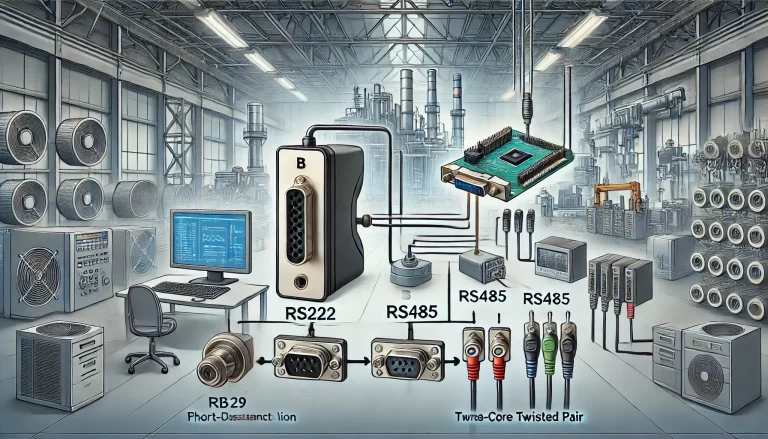
1. Differential Signaling for Noise Immunity
One of the key features that sets RS-485 apart from other communication protocols is its use of differential signaling. This method involves two wires to carry the signal: one wire is labeled as A (positive), and the other as B (negative). The data is transmitted by measuring the voltage difference between these two lines.
- When the voltage on A is higher than B, this represents a logic “1” (or high state).
- When the voltage on A is lower than B, this represents a logic “0” (or low state).
This differential signaling has a major advantage in environments with significant electrical noise. Because any noise picked up along the transmission path will affect both wires equally, the difference between the two signals remains largely unchanged, thereby maintaining the integrity of the data. This makes RS-485 ideal for use in environments such as factories, where high levels of electromagnetic interference (EMI) might otherwise corrupt standard signals.
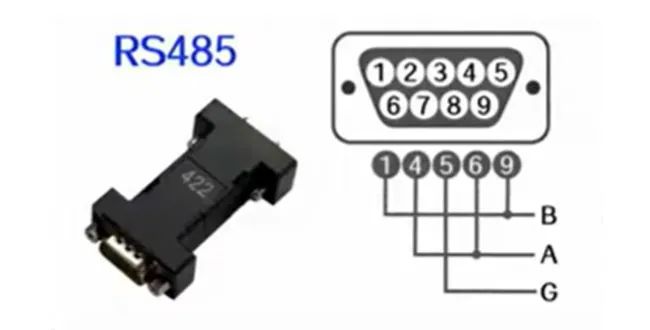
2. Multi-Point Communication: Enabling Networked Systems
Unlike the RS-232 standard, which allows only point-to-point communication, RS-485 supports multi-drop or multi-point communication. This means that multiple devices (up to 32 standard nodes, or more with advanced transceivers) can be connected to the same communication bus. Each device on the RS-485 bus can both transmit and receive data, allowing for highly flexible communication networks.
For example, in a factory environment, a single RS-485 bus could connect sensors, actuators, and controllers across different sections of a facility, all communicating with each other over the same two-wire system. This is highly advantageous because it reduces the complexity and cost of wiring compared to point-to-point systems.
However, in such multi-point setups, a key challenge is collision avoidance, where two devices may try to send data at the same time. To prevent this, communication protocols such as Modbus or Profibus are commonly used, which implement master-slave architectures or token-passing mechanisms to ensure orderly communication on the bus.

3. Half-Duplex Communication: Shared Transmission and Reception
RS-485 typically operates in half-duplex mode, meaning that data transmission and reception occur on the same pair of wires, but not simultaneously. When one device is transmitting data, all other devices must be in listening mode. This limitation is managed by coordinating which device can “speak” at a given time, usually controlled by a central master device.
This mode of operation is efficient for many industrial applications where devices need to report data periodically rather than continuously. For instance, a central controller might poll individual sensors in sequence, allowing each one to transmit its data without interference.
RS-485 can also be configured for full-duplex communication, though this is less common. In full-duplex mode, two pairs of wires are used: one pair for transmitting data and another pair for receiving it. This allows two-way communication to occur simultaneously, but it requires more wiring and is typically used in systems where constant, high-speed data exchange is necessary.
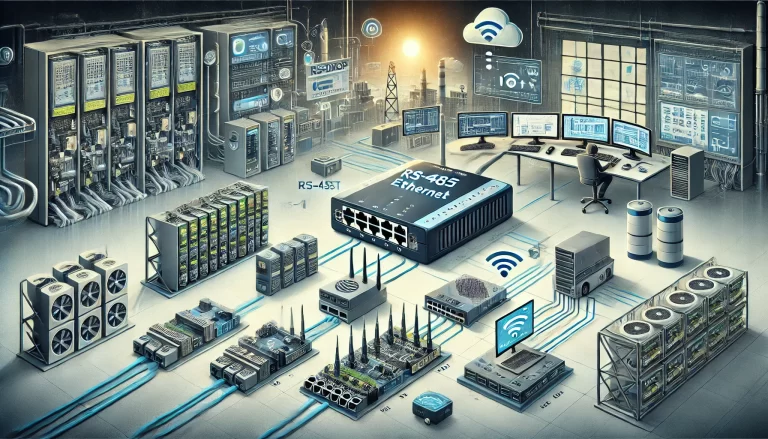
4. Long-Distance Communication: Up to 1.2 Kilometers
One of the standout features of RS-485 is its ability to transmit data over long distances, typically up to 1,200 meters (or about 4,000 feet). However, the trade-off between data rate and transmission distance must be considered:
- At low data rates (around 100 kbps), RS-485 can achieve its maximum distance.
- As the data rate increases, the maximum achievable distance decreases. For example, at a high data rate of 10 Mbps, the maximum transmission distance is considerably shorter, often reduced to tens of meters.
This scalability makes RS-485 highly versatile. In applications where long-range communication is required, such as remote monitoring of machinery or environmental sensors, the system can be configured for lower data rates. On the other hand, in shorter-range applications like factory-floor automation, higher data rates can be used to enable real-time control and feedback.
5. Termination Resistors: Avoiding Signal Reflections
To ensure reliable communication over long distances, termination resistors are typically used at both ends of the RS-485 bus. These resistors, usually 120 ohms, match the characteristic impedance of the transmission line. Without these resistors, signal reflections can occur, leading to errors in data transmission, especially at higher data rates.
By “absorbing” the transmitted signals at the ends of the bus, termination resistors prevent these reflections and allow for cleaner, more accurate communication. In addition to termination resistors, biasing resistors may also be added to the bus to ensure that when no device is actively driving the bus, the lines do not float into an indeterminate state.
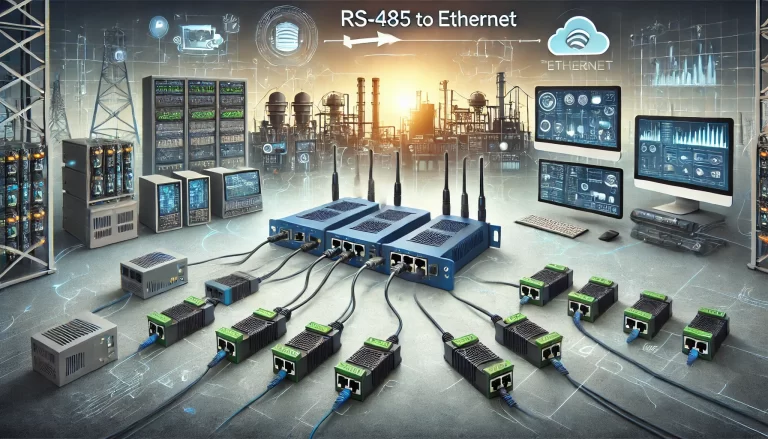
6. Applications of RS-485
RS-485’s robust features—differential signaling, multi-drop capability, long-range communication, and noise immunity—make it highly suited for a variety of applications:
- Industrial Automation: RS-485 networks are commonly used to link sensors, programmable logic controllers (PLCs), and other industrial devices.
- Building Automation: It forms the backbone for systems like HVAC controls, lighting systems, and access control.
- Data Acquisition Systems: RS-485 networks gather data from various measurement instruments spread over large areas, such as in power plants or large manufacturing facilities.
- Security and Surveillance Systems: The protocol is often employed in the control of security systems, including cameras and alarms, especially in environments where noise or long distances would otherwise disrupt communication.
7. RS-485 vs. RS-232
While both RS-232 and RS-485 are serial communication standards, they serve different purposes:
- RS-232 is designed for short-range, point-to-point communication, typically less than 15 meters and supporting only two devices.
- RS-485 excels in long-distance, multi-point communication, making it far more versatile in industrial settings.
Another key difference is the signaling method. RS-232 uses single-ended signaling, which is far more susceptible to noise, making it unsuitable for harsh environments where RS-485 thrives.
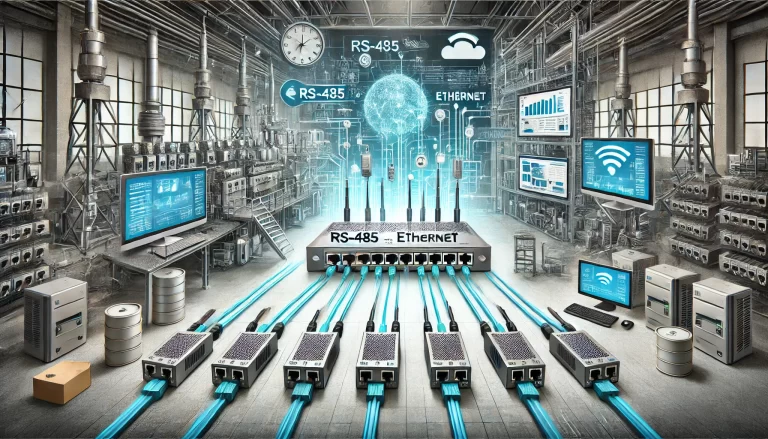
Conclusion
RS-485 remains one of the most widely used communication protocols for industrial applications due to its ability to handle long distances, support multiple devices, and maintain reliability in electrically noisy environments. Its use of differential signaling, multi-point support, and adaptability to both half-duplex and full-duplex communication makes it a versatile and essential tool in modern industrial and automation systems.
Understanding the nuances of RS-485, including the need for termination resistors, and managing data rates over long distances, is critical for engineers and technicians designing systems that require stable, long-range communication in challenging environments.
